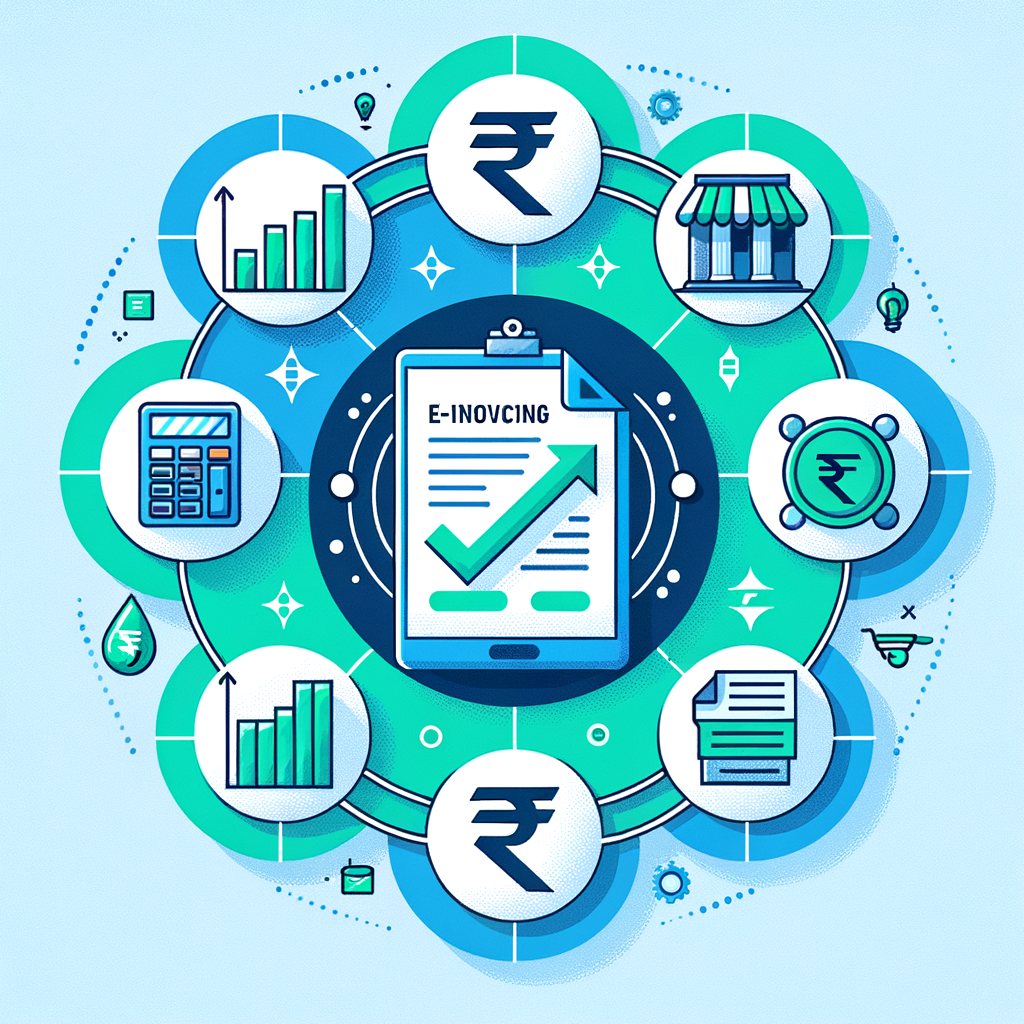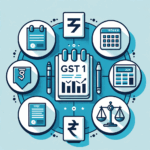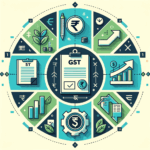E-Invoicing Beyond ₹5 Cr Turnover: Practical Guide for MSMEs
Has your business recently crossed the ₹5 crore turnover milestone? Congratulations! This impressive growth also brings a new and crucial compliance requirement under the GST regime: e-invoicing. While it might sound technical, this system is a significant step towards digitizing India’s tax ecosystem. This comprehensive e-invoicing guide for MSMEs is designed to demystify the entire process. We will break down exactly what e-invoicing is, who it applies to, and how you can implement it smoothly in your business operations. Understanding these rules is not just about avoiding penalties; it’s about leveraging technology to streamline your tax compliance, reduce errors, and improve overall business efficiency.
What is E-Invoicing? A Simple Breakdown for Business Owners
Understanding E-Invoicing for Indian MSMEs
Many business owners mistakenly believe that e-invoicing is simply about generating an invoice using their accounting software and emailing a PDF to the client. However, the system mandated by the government is far more specific and integrated. E-invoicing, or electronic invoicing, is a system where all Business-to-Business (B2B) invoices are electronically reported to and authenticated by a designated government portal known as the Invoice Registration Portal (IRP). The core concept revolves around standardization. Instead of businesses using a multitude of invoice formats, every invoice’s data is sent to the IRP in a prescribed schema (a standard format called JSON). The IRP then validates this information, checks for duplicates, and, if everything is correct, generates a unique Invoice Reference Number (IRN) and a digitally signed QR Code. This digitally signed data, along with the IRN and QR code, is sent back to the business, and this authenticated document is the legally valid e-invoice. This process ensures that the government has a real-time record of B2B transactions, which helps in curbing tax evasion and simplifying the return filing process for taxpayers.
The Current E-Invoicing Threshold Limit in India
The government has been implementing e-invoicing in a phased manner, gradually lowering the turnover threshold to include more businesses. As of the latest regulations, e-invoicing is mandatory for all GST-registered businesses with an Aggregate Annual Turnover (AATO) exceeding ₹5 crores in any preceding financial year, starting from 2017-18. It is crucial to understand how AATO is calculated. It is not just the turnover of a single GSTIN; it is the total turnover of all GSTINs registered under a single PAN across India. This calculation includes the value of all taxable supplies (both intra-state and inter-state), exempt supplies, exports of goods or services, and supplies made by a registered person on behalf of their principal. Therefore, even if one of your business locations has a low turnover, if the combined turnover under your PAN crosses the ₹5 crore mark, you are required to comply with the e-invoicing mandate.
Is Your MSME Required to Comply? A Quick Checklist
Navigating the e-invoicing regulations for small businesses can be confusing. To simplify this, it’s essential to clearly identify who is covered under this mandate and who is exempt. Simply crossing the turnover threshold does not automatically mean every entity must comply; the nature of the business and its transactions also play a vital role. This checklist will help you determine your business’s obligation accurately.
Who Must Generate E-Invoices?
If your AATO exceeds ₹5 crores, you must generate an e-invoice for the following types of transactions:
- Business-to-Business (B2B) Invoices: Any tax invoice issued to another GST-registered person.
- Business-to-Government (B2G) Invoices: Invoices issued to government departments or public sector undertakings that are registered under GST.
- Export Invoices: Invoices raised for the export of goods or services.
- Credit Notes and Debit Notes: Any credit or debit notes issued to registered persons that are linked to the invoices mentioned above.
Who is Exempt from E-Invoicing?
The GST law provides exemptions for certain categories of taxpayers, even if their aggregate annual turnover surpasses the ₹5 crore threshold. These entities are not required to generate e-invoices:
- Special Economic Zone (SEZ) Units (Note: SEZ Developers are required to generate e-invoices)
- Insurance Companies
- Banking Companies and Financial Institutions, including Non-Banking Financial Companies (NBFCs)
- Goods Transport Agencies (GTAs) that provide services for the transportation of goods by road in a goods carriage.
- Suppliers of passenger transportation services.
- Entities involved in the admission to exhibitions of cinematograph films in multiplex screens.
The E-Invoicing Process for MSMEs: A Step-by-Step Guide
Implementing this new system might feel daunting, but when broken down into manageable steps, it becomes a clear and achievable process. This section serves as a practical guide to e-invoicing in India, helping you navigate the transition from traditional invoicing to the new digital framework.
Step 1: Get Your System Ready
The first and most critical step is to ensure your technological infrastructure is prepared for e-invoicing. This primarily involves your accounting or Enterprise Resource Planning (ERP) software. Most popular software providers in India, such as Tally, Zoho, SAP, and Oracle, have updated their systems to be e-invoicing compliant. Check with your software provider to confirm that your version supports direct API integration with the IRP. If your current software does not offer this feature, or if you use custom-built software, you will need to engage a GST Suvidha Provider (GSP) or an Application Service Provider (ASP). These are third-party service providers authorized by the GSTN to help taxpayers connect their systems to the IRP securely and efficiently.
Step 2: Generate the Invoice Data (JSON File)
Once your system is ready, the process begins with creating a standard invoice just as you normally would. However, in the background, your e-invoicing-enabled software performs a crucial function. It takes all the mandatory invoice details—such as the supplier’s GSTIN, buyer’s GSTIN, invoice number, date, HSN codes for goods/SAC for services, taxable value, and applicable GST rates—and converts them into a specific file format called JSON (JavaScript Object Notation). This JSON file is structured according to the standard e-invoice schema (e-INV-01) prescribed by the government. For most MSMEs using compliant software, this conversion happens automatically without requiring any manual intervention.
Step 3: Upload the JSON to the Invoice Registration Portal (IRP)
The generated JSON file, which contains all the invoice data in a machine-readable format, must now be sent to the Invoice Registration Portal (IRP) for validation. This upload is typically done through a direct API connection between your ERP/accounting software and the IRP. The IRP’s system then performs a real-time check on the data. It verifies that all mandatory fields are present, checks for any duplicates against the Central Registry of the GST system, and ensures the data’s integrity. For official information and registration, you can visit the government’s e-invoice portal: GST e-Invoice System.
Step 4: Receive the Validated E-Invoice
If the JSON file passes all validations, the IRP performs two key actions. First, it generates a unique 64-character Invoice Reference Number (IRN), also known as a hash. This IRN is unique for every invoice for the entire financial year. Second, it digitally signs the uploaded data and embeds it into a QR Code. This QR code contains key invoice details, allowing for quick verification using a mobile app. The IRP then sends this digitally signed JSON, which now includes the IRN and the QR code, back to your software. Your software automatically updates the original invoice with this information. This final document, bearing the IRN and the QR code, is the legally valid e-invoice.
Key Benefits of E-Invoicing for MSMEs in India
While e-invoicing is a mandatory compliance requirement, it also offers significant operational advantages that can benefit your business. Viewing it as an upgrade rather than a burden can help you unlock its full potential. Here are some of the key e-invoicing benefits for MSMEs in India.
- Seamless GST Return Filing: This is perhaps the most significant advantage. The data from your e-invoices is automatically pushed to the GST portal and used to pre-populate your GSTR-1 (Outward Supplies) return. This drastically reduces the time and effort spent on manual data entry and minimizes the chances of errors, ensuring accurate and timely return filing. For your buyers, this data also auto-populates their GSTR-2A and GSTR-2B, facilitating faster and more accurate Input Tax Credit (ITC) claims.
- Faster and Easier Access to Credit: A government-authenticated e-invoice is a highly reliable document. Financial institutions, lenders, and invoice discounting platforms can verify the authenticity of an invoice instantly using the IRN. This increased transparency and trustworthiness can lead to quicker loan approvals, better credit terms, and easier access to working capital through TReDS (Trade Receivables Discounting System) platforms.
- Reduced Disputes and Errors: E-invoicing enforces a standardized format, ensuring that all necessary information is captured correctly. This interoperability between different accounting systems eliminates transcription errors and reduces discrepancies between what the supplier records and what the buyer receives. Consequently, this leads to fewer disputes over invoices, faster payment processing cycles, and improved cash flow.
- Improved Compliance: Adopting this system ensures real-time tracking of all B2B invoices by the tax authorities. This enhances overall tax transparency and helps businesses stay on top of their MSME e-invoicing compliance requirements. By ensuring every B2B transaction is reported correctly, you significantly reduce the likelihood of facing scrutiny, audits, or notices from the GST department, giving you greater peace of mind.
Conclusion: Embrace E-Invoicing for Smarter Business Operations
Transitioning to e-invoicing is a mandatory and transformative step for all MSMEs with an annual turnover exceeding ₹5 crores. While the initial setup may seem complex, the long-term benefits in terms of operational efficiency, improved compliance, and streamlined financial processes are undeniable. This system is a cornerstone of the government’s vision for a digitized economy, designed to simplify GST compliance and create a more transparent business environment for everyone.
By understanding the step-by-step process, leveraging the right accounting software, and recognizing the advantages it brings, you can turn this regulatory requirement into a powerful tool for business growth. This e-invoicing guide for MSMEs is your starting point. If you need expert assistance with software integration, GST compliance, or making the transition seamless, TaxRobo’s team of experts is here to help. Contact our experts today to ensure a smooth, compliant, and error-free move to e-invoicing!
Frequently Asked Questions (FAQs)
1. What is the penalty for not issuing an e-invoice when it is required?
Failing to generate an e-invoice when it is mandatory is a serious compliance issue. A non-compliant invoice is treated as an invalid invoice under GST law. The penalty for this is 100% of the tax due or ₹10,000, whichever is higher, for each such invalid invoice. Critically, your buyer will also be unable to claim Input Tax Credit (ITC) on an invoice that does not have a valid IRN, which can damage your business relationships.
2. Can I amend an e-invoice after it is generated on the IRP?
No, an e-invoice cannot be amended or modified once it has been successfully reported to the IRP and an IRN has been generated. The only option is to cancel the IRN on the IRP within 24 hours of its generation. If the 24-hour window has passed, you cannot cancel it on the IRP. In such cases, any changes must be made by issuing a debit note or a credit note on the GST portal, which must also be reported to the IRP to become valid.
3. Is e-invoicing applicable for B2C (Business to Consumer) invoices?
No, the e-invoicing mandate is currently applicable only for supplies made to registered persons (B2B), government entities (B2G), and for exports. It does not apply to invoices issued to end consumers (B2C). However, it is important to note that businesses with an aggregate turnover exceeding ₹500 crore are required to generate a dynamic QR code on their B2C invoices to facilitate digital payments.
4. Do I need to print the QR code on the invoice?
Yes, it is mandatory to print the digitally signed QR code on the physical copy of the invoice that you provide to your customer. The QR code contains key details of the invoice, such as the GSTIN of the supplier and recipient, invoice number, date, invoice value, and the IRN. This allows tax officers, customers, or anyone else to quickly verify the authenticity and details of the invoice using a QR code reader or a specific mobile app.



